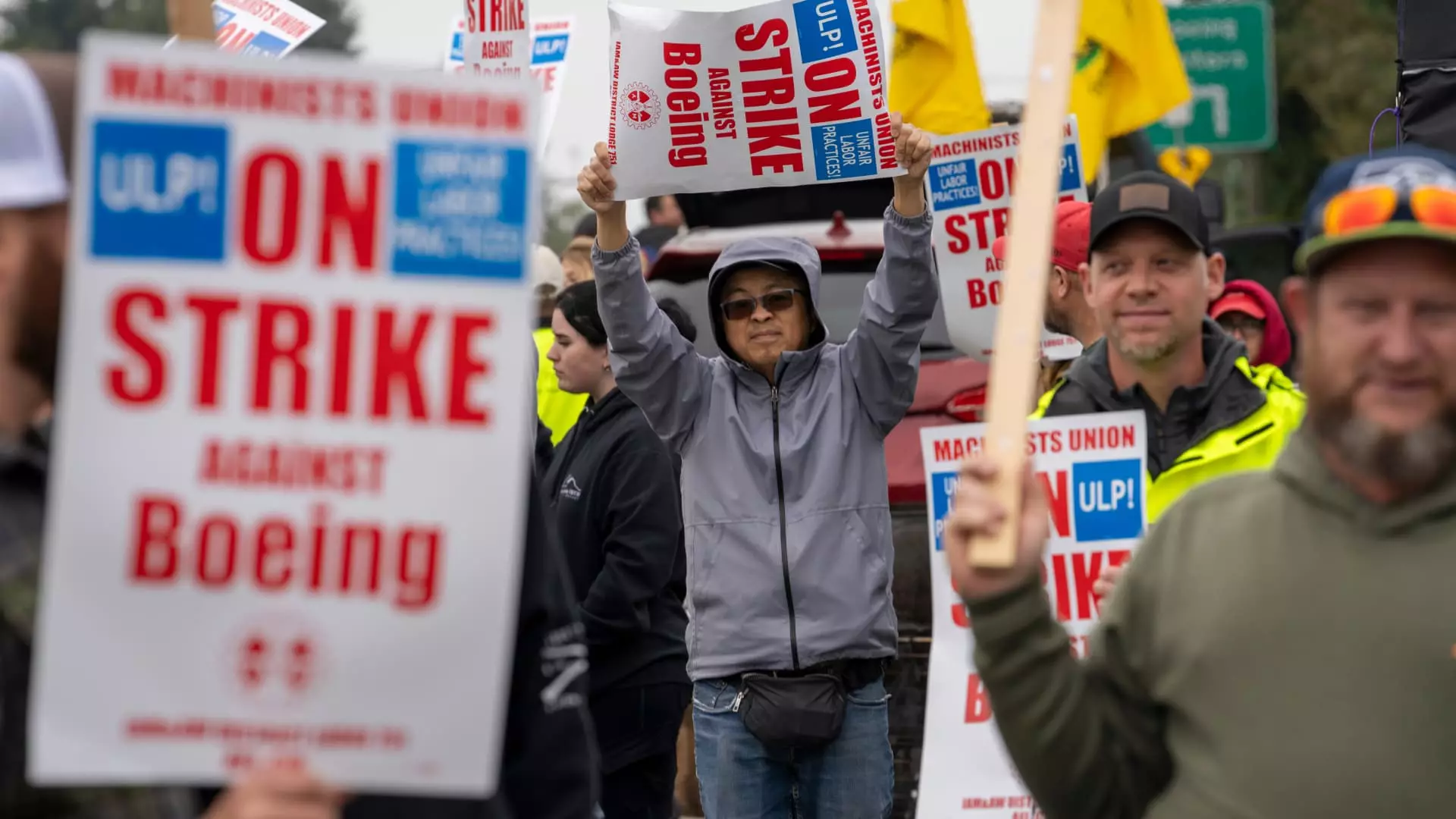The labor dispute involving Boeing and its machinists has escalated significantly since mid-September, when over 33,000 workers walked off the job in protest. This major strike initiated on September 13 is a critical flashpoint in labor relations within the aerospace industry, significantly impacting Boeing’s production capabilities. The machinists’ decision to strike came after a unanimous rejection of a tentative labor agreement, highlighting deep-seated dissatisfaction with the terms. Boeing’s withdrawal of the contract offer signifies more than just a negotiation breakdown; it reflects the complexities of labor relations in an industry that is both highly competitive and deeply affected by labor costs.
In the weeks following the initial strike, Boeing made attempts to adjust its contract offer by enhancing pay raises and introducing bonuses in hopes of bridging the gap with the union. However, the International Association of Machinists and Aerospace Workers (IAMAW) dismissed these revisions, arguing that such offers were unilaterally imposed rather than the result of collaborative negotiations. The refusal to reach an agreement has resulted in a stalemate, with both parties entrenched in their positions. Boeing’s leadership, particularly CEO Stephanie Pope, articulated the firm stance that the union’s demands exceeded reasonable expectations and could jeopardize the company’s competitiveness.
The financial ramifications of the ongoing strike are dire. S&P Global Ratings estimates that Boeing may incur losses exceeding $1 billion per month during the labor disruption. This staggering figure not only reflects the immediate costs associated with halted production but also poses long-term threats to the company’s reputation, market position, and credit ratings. The aerospace industry is notoriously sensitive to fluctuations in production schedules and labor forces; thus, prolonged strikes can lead to significant cascading effects throughout the supply chain, ultimately affecting customers and shareholders alike.
The fundamental discord between Boeing and the machinists lies in the diverging perceptions of what constitutes fair compensation and labor conditions. The union has expressed frustration that Boeing has not sufficiently addressed key worker concerns, including wages, retirement plans, and benefits. As both parties dig their heels in, the union’s demands seem to reflect a broader struggle for labor rights that extends beyond Boeing. Meanwhile, Boeing’s management portrays the financial constraints that come with maintaining competitive pricing in a volatile global market.
Without a breakthrough in negotiations, the strike is set to continue, raising questions about the future relationship between the union and Boeing. Will both sides be willing to revisit negotiations with a fresh perspective on compromise? Or will this conflict broaden, ultimately reshaping labor relations within the aerospace sector? As the situation stands, it is evident that the labor movement is at a crossroads, where the fight for fair representation and competitive business practices must find common ground—something that may be increasingly difficult in the fiercely competitive landscape of aviation manufacturing.

